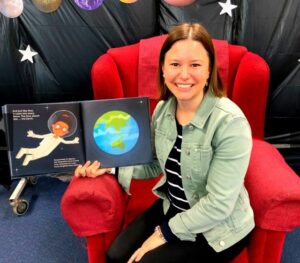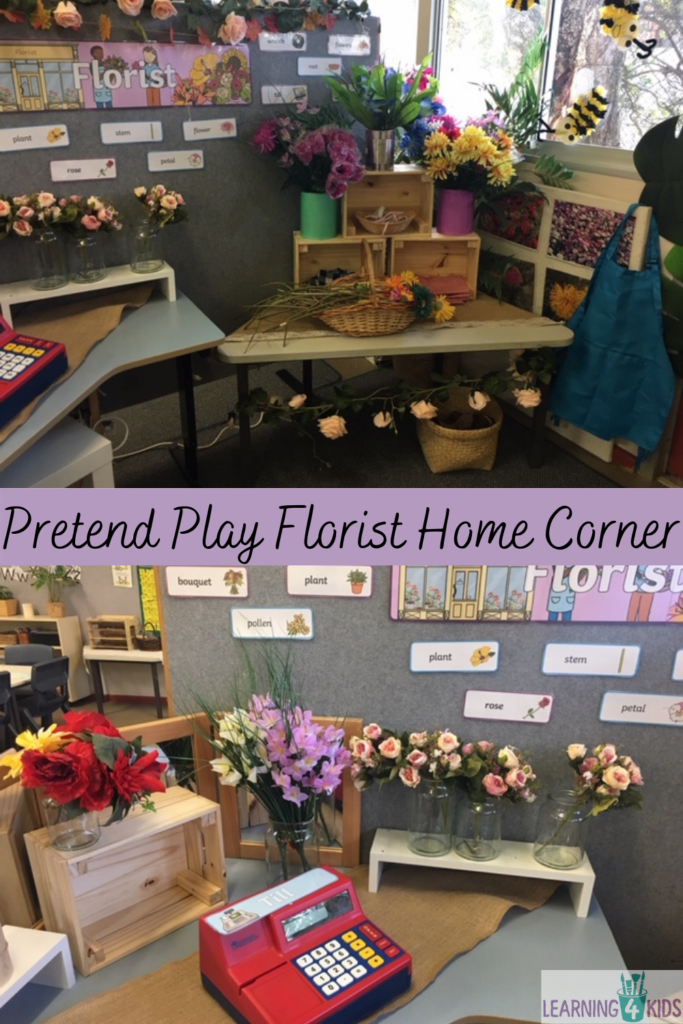
A Pretend Play Flower Shop is an opportunity for children to take on the role as a florist or customer and play creatively while providing literacy and math opportunities.
Children can pretend to take and write down phone orders, serve customers, handled money and busily make bouquets with fake flowers and other props provided.
When setting up a Pretend Play Florist, it is always best to involve our small people who will be playing in it. Kids have the best ideas!
What you will need?
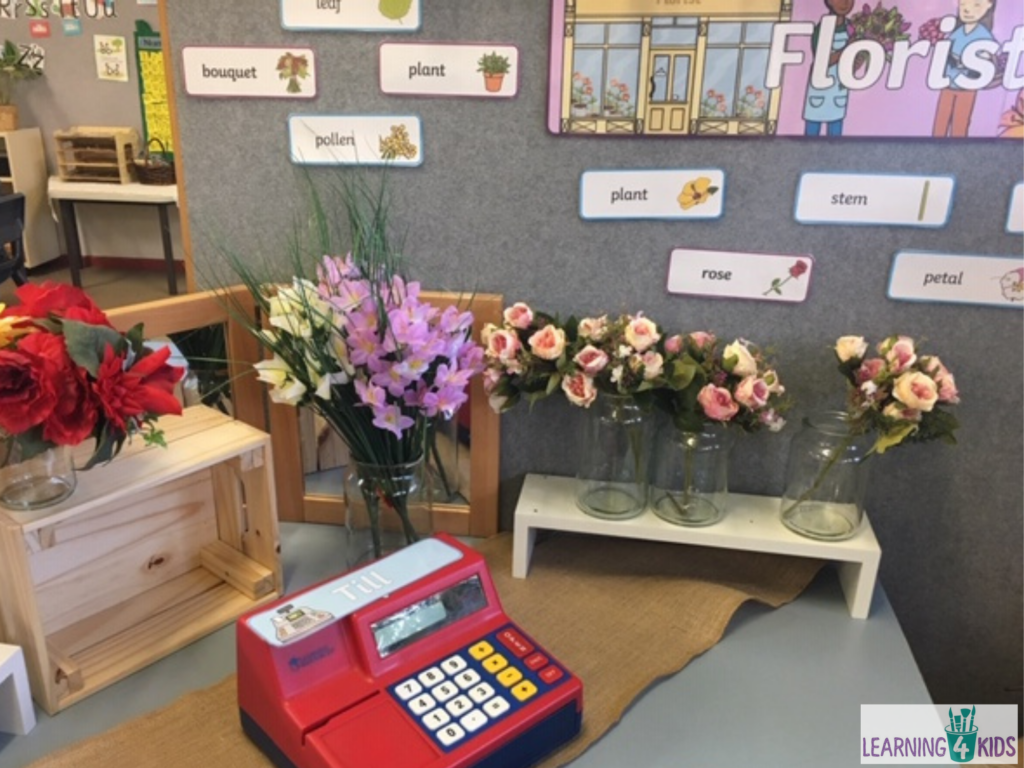
Together with children, research florists in books or online and observe the different items that they include. Incorporate some writing and make a list of items you will need. Reach out to families or Op/Thrift Shops for items and other props to enhance the learning opportunities. Children could also make their own flowers if fake flowers are limited.
The items you place in your Pretend Play Florist can be as simple as adding fake flowers and a cash register or the ideas can be endless.
Here are some ideas to get you started: range of fake flowers (varieties and colour), baskets, ribbons and cloth (to tie bunches of flowers together), jars, small buckets or large tins, apron, name tags, labels and shop signs, cash register, fake money, purse/wallets, photos and images of florists/flowers, shopping baskets, pretend phone for taking orders, clip board, paper and pencils, books about flowers and florists and a watering can.
Let’s Play
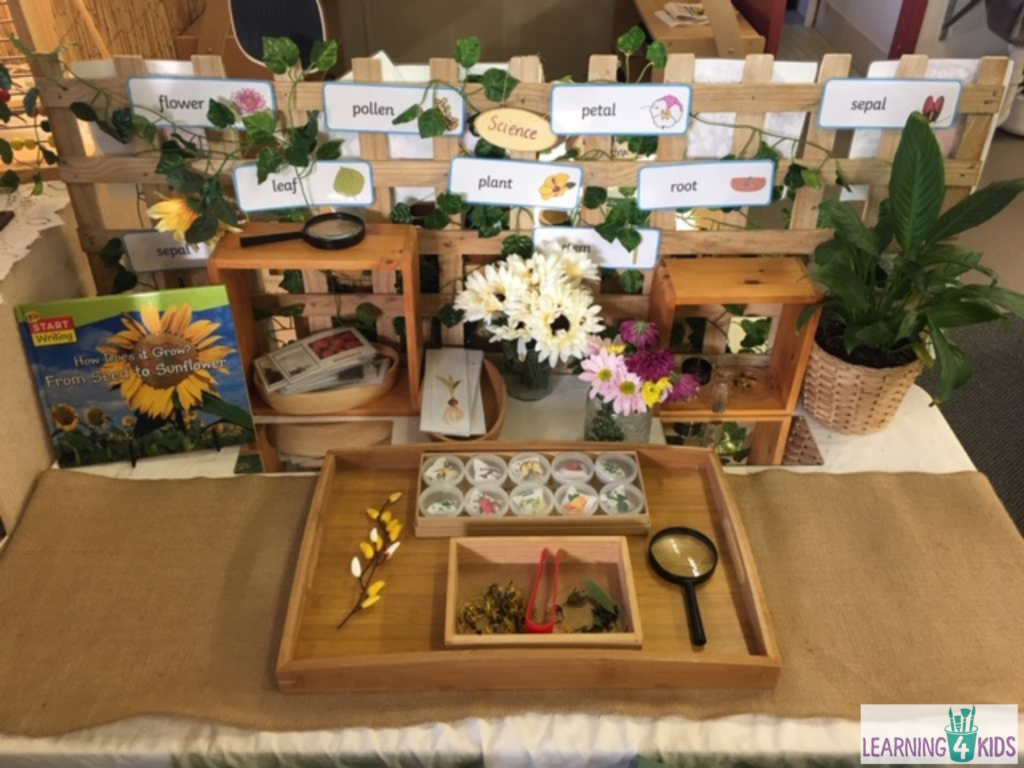
To extend the learning about flowers and to compliment the Pretend Play Florist Home Corner, a science table learning centre is a great opportunity for children to play and explore. Here are some ideas:
- Real life flowers to observe and draw. As they dry out, students can sort the petals, stems, leaves and buds.
- Magnifying glasses, paper and clip boards are great for little scientists to encourage observations and recording what they see (drawing and labelling).
- Life Cycle of flowers from seed to flower. Books are also useful for exploring this topic. Adding life cycle cards to the science table will encourage children to sequence and order.
- Petri dishes and tweezers (science tools) for children role play taking care of their very important science work.
- Add a range of seeds and their packets for children to observe the variety of seeds and their sizes.
- QR Code option for children to view selected videos about the life cycle of flowers or to watch a time lapse of a seed to sunflower.
- Children can explore their sense of smell by different scented flower petals in zip lock bags or containers with tiny holes.
Let’s Learn
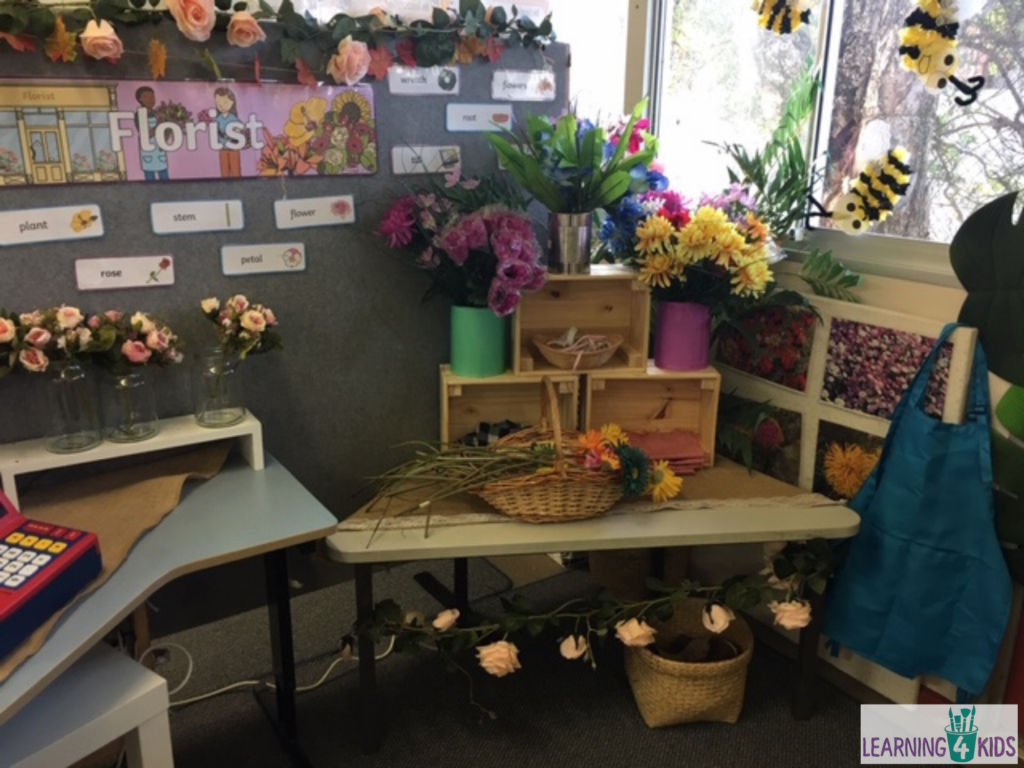
Benefits of Imaginative Play
- It provides opportunities for children to identify with the adult world. Practice and role play their understanding and interpretation.
- Develop social skills: practicing negotiation skills, turn taking and sharing. Provides opportunities for working out problems and experimenting with solutions.
- Emotional development: Understanding and expressing their feelings through the re-enactment of certain experiences. Taking on roles that encourage discipline and empathy.
- Encourages imagination: Children can be anyone and do anything in the pretend world.
- Develop language skills: practicing listening, looking and talking. Being spoken to and talking with other people, also developing an understanding of what is being communicated through body language such as smiles and nodding.
- Developing vocabulary associated with the topic or concept they are role playing.
- Provides opportunities for literacy and numeracy skills such as writing and recognising money.
- I also believe that imaginative play is a great way for children to relax and unwind from their busy lives.
Other Flower Activities and Ideas
There are many other ways to incorporate other learning areas around the topic of flowers. Here are a few ideas on Learning 4 Kids.
Play Dough Flower Pots
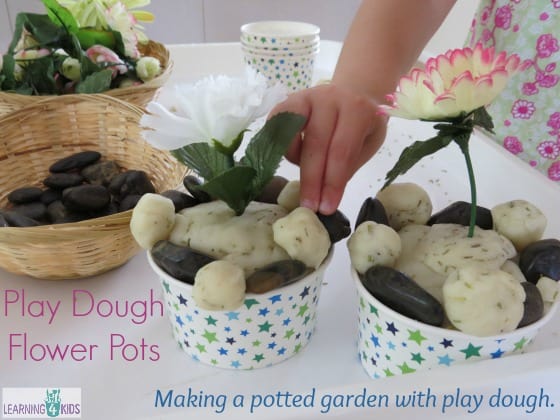
Play Dough Flower Pots and making a potted garden with play dough is a fun way for children to play creatively and imaginatively. Using a Rosemary Textured Play Dough, children can pretend to be gardeners, horticulturalists, they can make patterns, press, squish, roll and manipulate the play dough to create whatever comes to mind. More info here:
Making Patterns and Sorting Colours with Flowers
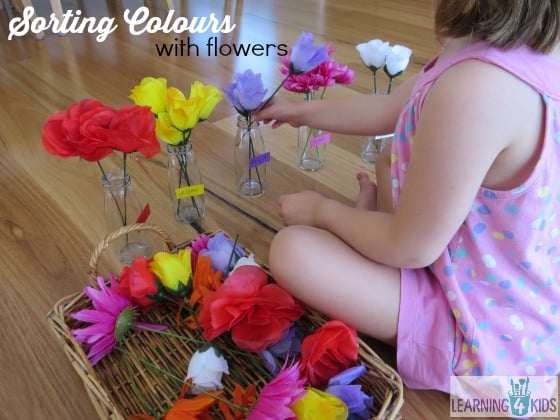
A basket filled with a range of different coloured fake flowers can open the opportunity to learn in so many ways. Children can explore ideas, theories using imagination and dramatic play, make patterns, learn colours and so much more. More info here:
Lavender Scented Play Dough
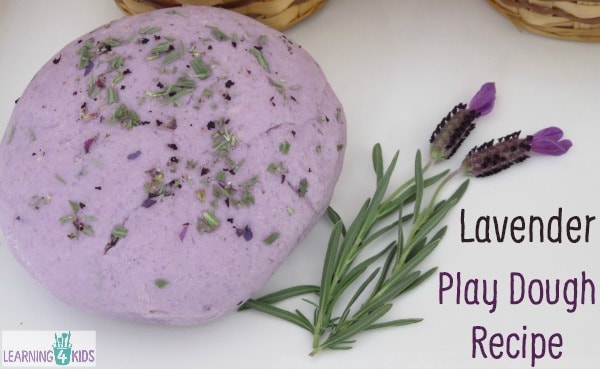
Lavender Scented Play Dough Recipe creates lightly scented lavender play dough that stimulates the senses while creating and playing. It is a silky smooth play dough that is textured with finely chopped lavender leaves and flowers, heightening the lavender scent and sensory play experience. More info here:
Create a Spring Play Dough Garden
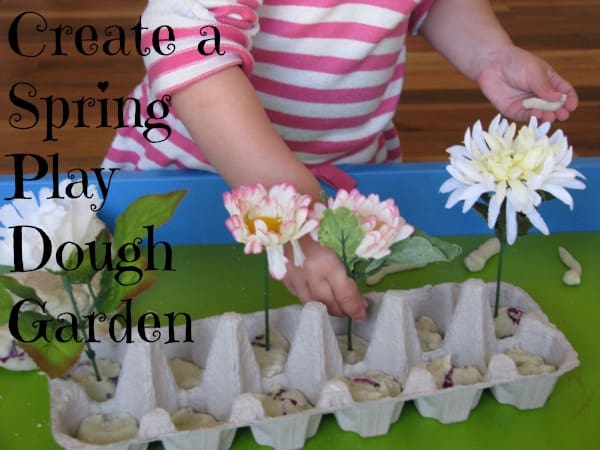
A simple spring theme activity for the kids, creating a Spring Play Dough Garden. The play dough has been scented with a herbal shampoo to smell like flowers and is textured with small coloured flower petals. It is a great activity for kids to explore their creativity and imagination as they create their very own spring garden. More info here:
Planting a Garden
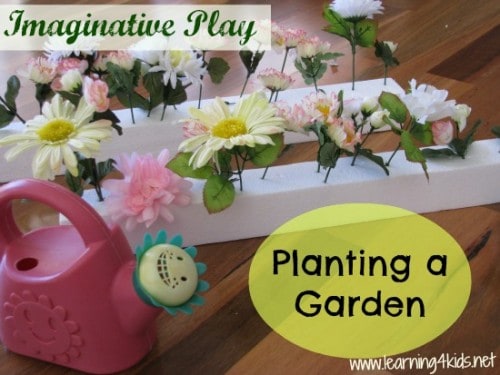
Planting a Garden using Styrofoam (re-used from a packaging) and fake flowers. Add a watering can to create a simple imaginative play opportunity. More info here:
Create a Number Line with Pop Stick Flowers
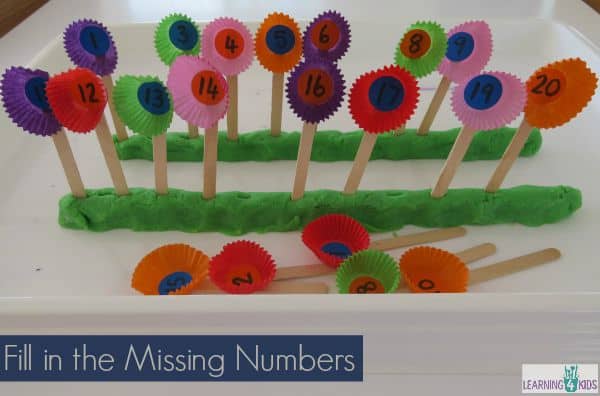
The activity provides children with the opportunity to un-jumble the numbered pop stick flowers and arrange them in order from 1 to 20 into some play dough rolled out into a line. Children can also play games such as ‘Fill in the Missing Number’ counting forwards and backwards and guess the missing number. More info here:
Available in our online shop:
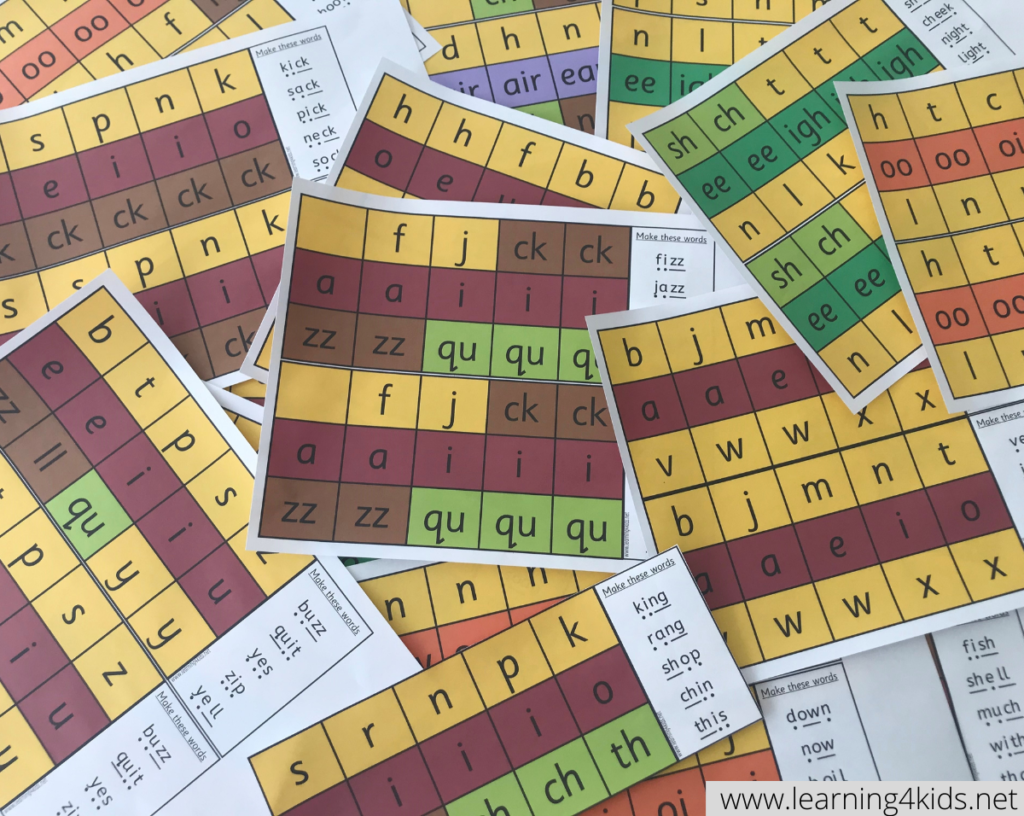
The Letter Sounds Cut and Paste Printable Bundle is a hands-on, interactive activity that supports children in their journey of learning to read. It provides children with the opportunity to practice the segmentation and blending of simple decodable words, phonemic awareness skills and support phoneme-grapheme mapping. More info here:
